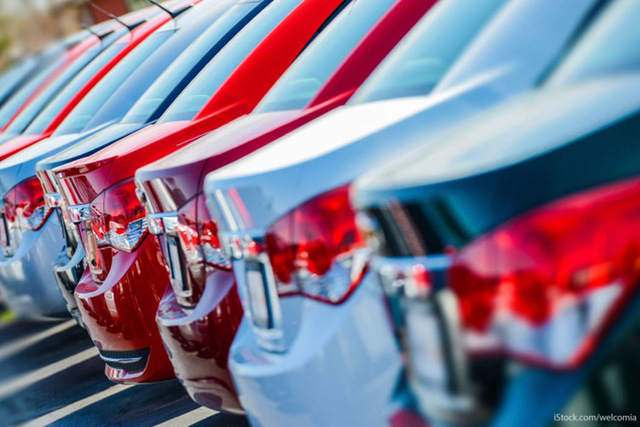Things to Know When Shopping for a Car
There are 250 million registered passenger vehicles in the U.S. today — and just 115 million American households. According to government statistics, 57 percent of those households have two or more vehicles (9 percent have none).
It’s clear that for the vast majority of us, cars are essential tools that allow us to conduct our very busy and increasingly spread-out modern lives. They ferry us back and forth to work, they move our families from place to place, they help us complete our chores and purchases, and sometimes, they even let us get away from it all
What You Want (and Need)
Know what you want, before you start looking. It will save you a lot of time and could save you from a very expensive mistake.
Your Budget
While a car may be an essential tool, it’s also an expensive one. And unless you have stacks of cash — and even if you do — you need to figure out what you can afford to spend. After your mortgage or rent, your car payment is likely to be the next biggest item in your budget. So calculate carefully, and know what your finances will allow. You may need to cut other expenses to make room for a car loan.
New or Used?
Almost 13 million new vehicles were sold in the U.S. in 2011, along with an untold number of used cars. So which path is right for you? It depends on how you answered Numbers 1 and 2 on this list.

Things to Do Before Heading to a Dealership
to pass a little time before your movie starts, or to get away from the house while your mother-in-law is visiting, you owe it to yourself to do a few things first. These eight duties will each make your life much easier if you find a car, truck, van, or SUV you want to buy on the spot. Although some of them may take a little time, they’ll save you plenty of trouble later.
Make sure you have your trade-in vehicle’s title.
Are you someone who is notoriously disorganized? You probably have the title of your trade-in shoved between other papers. Do yourself a favor and look for it. Check every drawer, every box, and every niche in your home.
Get a copy of your credit report.
Not going to pay for your new vehicle outright? You’ll need financing, and that means the lender will want to check out your credit report. First, though, you need to have a good indication of what your financier will see.
Check out your vehicle’s honest trade-in value.
This is quite simple to do online and shouldn’t take up too much of your time. Be honest when inputting your information, and think the way the dealer will. For instance, would anyone really call your 15-year-old car in good condition if it’s dinged up and barely getting two-thirds of its original gas mileage?
Evaluate your capital and see what you can absorb.
It’s quite easy to get excited when you hop into a new Ford and realize that it’s the car you’ve been dreaming about for a long time. All that adrenaline can lead to poor decision-making, especially when it comes to your finances.

How to choose a car dealership
Your car-shopping experience will vary depending on the dealership you choose. In a recent Consumer Reports survey, 57 percent of those polled said they were very satisfied with their experience at the dealership, and 31 percent said they were somewhat satisfied. On the other end of the spectrum, 10 percent of the respondents said they were somewhat or very dissatisfied with their dealership experience.
That survey makes it clear it’s possible to have a positive dealership experience. It’s also possible to have a disappointing one. Your car-dealership adventure doesn’t have to be a luck-of-the-draw situation. There are steps you can take to make sure you choose a dealer with which you love doing business.
Price.No one wants to pay too much when purchasing a car, and people like to feel as if they’ve cracked the code and beaten the system when it comes to getting a great price on a vehicle. It’s human nature to crave a bargain.
Service. People need people, and even the most informed car shopper reaps rewards from stellar customer service. Service is key because informed client care rooted in integrity fosters trust between the consumer and the dealership, allowing you to focus on getting the right solutions to problems rather than avoidance of unnecessary expense.
Availability.Availability is essential, because if a dealer’s vehicle stock is limited, so are your choices. If a dealership doesn’t have models equipped with the options you seek, the dealer can special-order your vehicle from the manufacturer, but in many cases this can be a lengthy process. The simplest and most straightforward approach is to find a dealer offering a car with the options you want right there on the lot.

Things to Look Out For in a Used Car Dealership
Finding a reputable used car dealership can easily mean the difference between a car buying experience that is a dream come true, or a complete and total nightmare. As a used car buyer, learning to discern the difference between a good dealership and a great dealership, can make all the difference when it finally comes time to buy
the suburban streets are littered with used car lot options. From the roadside lot with shady salesmen and under-the-table dealings, to renowned locations with fair sales practices and a friendly team – the trick is learning how to spot the good apples in a barrel of bad ones.
Things to Look Out for in a Used Car Dealership
As you embark on the excitement of used vehicle ownership, first take a step back and learn four key attributes that every great used car dealership should have
Reputation: If there is one thing that consumers in America are great at, it’s giving their opinion of a buying experience. Whether it involves food at a restaurant, service at a neighborhood grocery store, or acquiring a new car, people in the United States love weighing in and using their voices. If the used car dealership you are considering does not feature online reviews, exercise caution moving forward. This either means that they severely sensor the reviews of their customers, or they are an overnight pop-up sort of shop – neither of which translates into a good thing for you. A reputable used car dealership should have a fair amount of exceptional reviews, with a few bad apples sprinkled in. Pay attention to how management responds to negativity, if at all. This is the best way to measure the level of customer service prior to engaging with employees at the actual dealership. A great business owner will respond promptly to complaints, and offer some sort of resolution. If a car lot has bad reviews without any sort of public response, be wary. Dealerships that do have negative report cards, but promptly respond with conflict resolution measures, are usually on the safe side. Regardless – don’t go into a used car dealership without first exploring its business reputation, and the management of said reputation. This is the first and easiest step to take in order to secure a positive used car buying experience.
Pricing Practices: All too often, used car dealerships take certain liberties when it comes to pricing the vehicles on their lot. New vehicles come with a manufacturer’s suggested retail price, or MSRP, so this unsavory sales method is not an issue when shopping for cars straight off of the assembly line. Keep a watchful eye on window stickers, and ask questions on any line items that are confusing to you. Used car lots are notorious for tacking on excessive items, as most customers don’t think to ask what a “dealer prep fee” is, or why they should have to pay for it. Bottom line – a great used car dealership will include all necessary fees in the car’s overall price, and will practice transparency in their pre-owned vehicle pricing.
Finance Fumbles: When a used car lot can’t get you to pay excessive dealer fees that are tacked onto the sticker prices of used vehicles, their finance department will try and take a shot at skimming more money out of your wallet. While most people will need to finance their new and used car purchases, a vast majority of those individuals don’t realize that they can obtain financing outside of the used dealership they are purchasing from. Whether you plan to get pre-approval from an outside institution or not, at the very least do your homework prior to heading into a dealership. Having a general idea of current finance rates, terms, and conditions, can help you spot a shady deal as soon as it slides across the finance manager’s cheap wood veneer desk.
Unnecessary Add-Ons: When a used dealership can’t get you to pay higher finance rates, or pay $500 for the car wash that took their minimum-wage worker five minutes to complete, they will likely try to upsell you on items you don’t need. While this shouldn’t be a deal breaker in and of itself, it should be approached with caution. Just as the restaurant will try to sell you the margarita with the more expensive tequila, so will any car dealership offer you add-on items to your vehicle purchase. Keep in mind, however, that offering something, and persistently pushing it on you, are two very different things. If the salesperson is making you feel uncomfortable or otherwise pushed into add-on items you have clearly expressed zero interest in, it may be time to move on. Remember, until you sign that final paperwork it’s never too late to get up and exit an uncomfortable buying situation.
secrets to getting the best deal on a new car
Prepare for sticker shock and new-car-loan awe. The average new car transaction price was $34,428 in December 2015, according to Kelley Blue Book. Meanwhile, the average loan amount for a new vehicle in the third quarter of 2015 was $28,936, according to Experian Automotive.
However, it doesn’t mean you have to spend that much to buy a new car. Whether you’re in the market for a new-new car, or looking for a previously owned set of wheels that’s at least new to you, there’s always a way to save money. Here are some of my top cheapskate car-buying tips.
That’s tough-love advice, but there’s a good reason for it. You might need to settle for a lesser model, opt for used instead of new or postpone your purchase to continue saving until you have the cash to buy. That’s because when you pay interest on something that actively loses value, you are losing money in two directions.
Kelley Blue book used the following to illustrate the “typical” financing deal:
Car sales price: $27,000.
Out-the-door price: $30,000
Down payment/trade value: $5,000
If You Don’t Buy With Cash, Get Preapproved
For those who can’t or won’t follow the above advice, at least get preapproved for a car loan before heading to a dealer. This will allow you to compare dealer interest rates to other available auto loan rates. It will also aid in you being able to focus on the sales price during negotiations rather than the monthly payment